E-E-A-T: Everything You Need to Know
April 10, 2024 • 35 min read

- What is E-E-A-T?
- Experience, Expertise, Authoritativeness & Trustworthiness
- Introducing Google’s Quality Raters & Quality Rater Guidelines
- Why E-E-A-T Matters
- E-E-A-T: Signals Not Ranking Factors
- E-E-A-T for YMYL Sites
- You Can’t Fake E-E-A-T
- Practical Tips to Demonstrate E-E-A-T
- The 3 Cornerstones of E-E-A-T
- E-E-A-T; Demonstrating Your Site’s Right to Rank
Key Takeaways:
- E-E-A-T is one of the most important things to demonstrate if you want to achieve sustained SEO success.
- E-E-A-T stands for Experience, Expertise, Authoritativeness, and Trustworthiness.
- Google’s Quality Raters use E-E-A-T as part of their assessment criteria.
- It’s considered a guide for quality assessment by the Quality Raters, and is not a direct ranking factor.
- Demonstrating E-E-A-T involves both on-site and off-site factors, with it being essential to corroborate what you say about yourself on your own site with evidence from third parties to back this up.
- It’s especially important for “Your Money or Your Life” (YMYL) websites to exhibit strong E-E-A-T signals.
- Some key ways to build and demonstrate E-E-A-T include:
- Highlighting real-life experiences and practical knowledge in your content.
- Leveraging digital PR to earn links and mentions from trusted sources in your field.
- Gathering and showcasing positive reviews and testimonials to build trust.
- Profiling the people behind the content. Make it easy to learn more about the experts who created it.
- Putting in the effort to create standout About Us pages.
E-E-A-T is maybe the most important thing for SEOs to double down on right now.
But it’s not a ranking factor.
Well, at least not directly or in the same way as many of the other things that we do to increase organic rankings, visibility and traffic.
But that’s no reason to push it lower down your list of priorities. Not at all.
E-E-A-T is a set of signals that Google’s ranking systems use to identify high-quality content.
In this guide, I’m going to take a detailed look at what E-E-A-T is, why it matters so much and how you can go about improving your own site‘s signals, both on-page and off-page.
What is E-E-A-T?
E-E-A-T stands for Experience, Expertise, Authoritativeness and Trustworthiness, and it’s how Google’s Quality Raters evaluate the search engine’s ranking systems and assess the quality of a page.
This happens to ensure that the SERPs are returning helpful and relevant results and meet the expectations of what searchers are looking for.
Quality Raters are responsible for rating the quality of web pages, and this feedback is used by Google to improve the Search Experience. E-E-A-T is one key measure that Quality Raters use to evaluate pages.
Before December 2022, this was known as E-A-T (Expertise, Authoritativeness and Trustworthiness), with the second E, Experience, being added to assess whether content has been produced by someone with firsthand experience.
But E-E-A-T isn’t a ranking factor. It’s a set of signals.
But it’s more important than ever that your site demonstrates high or even very high E-E-A-T.
And to fully understand why this is the case, you first need to get familiar with Google’s Quality Raters and the Quality Rater Guidelines, especially what they are and how they’re used, as well as how Google’s ranking systems work.
But let’s quickly look at what each of these four components of E-E-A-T means.
Experience: This is all about the practical knowledge or skill that an author or a website has in their respective field. It’s about how well they understand the topic they are discussing or the service they are providing based on their direct, first-hand experience.
Expertise: Expertise is about the level of knowledge or skill in a particular area that is held by the author or brand. This can be formal, like having qualifications or professional credentials, or informal, based on life experiences or self-taught skills, if the topic makes this credible.
Authoritativeness: This refers to the strength of the reputation a website or content creator has within their field. Authoritativeness is often built through recognition by peers, the public, or other authoritative sources.
Trustworthiness: Trust is all about the credibility and reliability of the content, the content creator, and the website. It encompasses honesty, transparency, and the accuracy of the information provided.
Keep reading to learn more about what each of these means for your strategy and how to demonstrate it.
The Introduction of E-A-T
E-A-T isn’t a new concept.
In fact, it was first introduced into Google’s Quality Rater Guidelines in March 2014, but VP of Search, Hyung-Jin Kim, confirmed in his Keynote at SMX Next 2022 that “Google has been using E-A-T for approximately 10-13 years.”
This means that E-A-T is something that has been actively used since some point between 2009 and 2012, at least two years before SEOs first became aware of it.
It wasn’t, however, until 2018’s Medic Update (AKA August 2018 Broad Core Algorithm Update) that E-A-T really gained attention in the SEO community.
Why? Because this was the first algorithm update where some SEOs really felt the emphasis of E-A-T, and the impact of not demonstrating it.
Google’s Medic Update, August 2018
On the 1st of August 2018, Google rolled out a Broad Core Algorithm Update, what is now referred to as the Medic Update.
Why was this such a big deal, and why did it become known as this?
The Medic Update, initially at least, seemed to target sites primarily in the medical space. In following updates, this had a similar impact on other YMYL niches, including finance.
Barry Schwartz first coined the update as The Medic Update, based on insights from over 300 sites.
Here’s what Barry had to say a week after the update:
I reviewed over 300 sites, sites that said they were impacted by this update. The first bit of data that sorely stood out around this was that a huge percentage of the sites impacted were specifically in the medical, health, fitness, healthy lifestyle space. In fact, over 42% of the sites submitted were.
Barry Schwartz, Search Engine Roundtable
During the initial Medic Update, medical sites that weren’t sufficiently demonstrating E-A-T signals saw significant declines in organic visibility. And by significant, I mean significant.
Take a look at the drop that Dr. Axe saw in this update; from an estimated 20.39 million monthly sessions in July 2018 to 7.44 million in August 2018. By December 2018, that had dropped to 3.22 million. Or, in other words, the site lost 84% of its organic traffic.
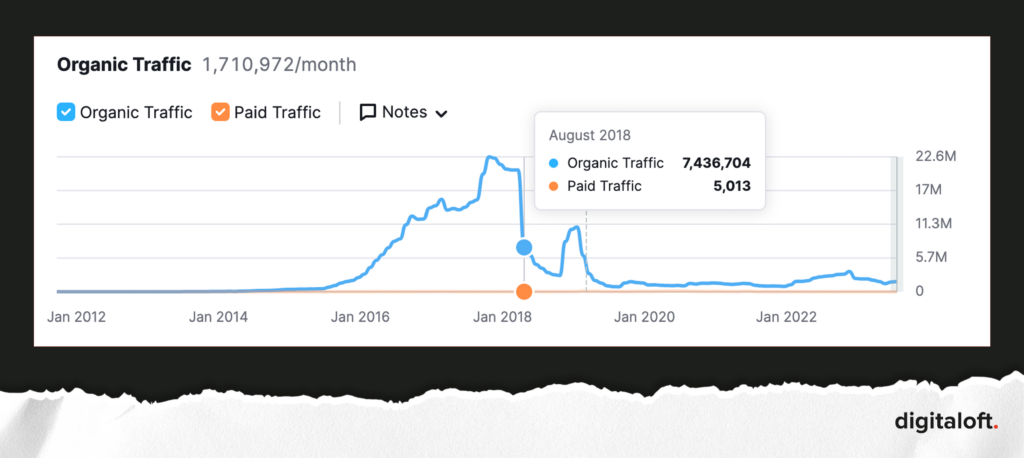
Cyrus Shepherd shared this site as an example on Twitter some months later, showing the continued drop:
This, in reality, was Google’s first real emphasis on the importance of demonstrating strong E-A-T signals. And that, especially in YMYL niches, this rapidly became a necessity.
To learn more about Google’s Medic Update, I recommend checking out this post by Marie Haynes, which summarises this update with this example:
“If you run a diet or nutrition site, the following are all going to be important factors in how you rank:
- Is your content written by people who are truly known as authorities in their field?
- Do your business and your writers have a good reputation?
- Are you selling products that are potentially either scams, not helpful, or even harmful to people?
If you are lacking business or author reputation or have products that don’t inspire trust, then re-establishing trust and ranking well again may be difficult.”
One thing stands out here to me; reputation. And that’s something you’ll see spoken about time and time again in the context of E-A-T and E-E-A-T.
In fact, twelve months after the Medic Update, Google published a blog post offering advice about what site owners need to know about the latest (August 2019) update.
One section to pay particular attention to is the questions posed around expertise:
- Does the content present information in a way that makes you want to trust it, such as clear sourcing, evidence of the expertise involved, background about the author or the site that publishes it, such as through links to an author page or a site’s About page?
- If you researched the site producing the content, would you come away with an impression that it is well-trusted or widely-recognized as an authority on its topic?
- Is this content written by an expert or enthusiast who demonstrably knows the topic well?
- Does the content have any easily-verified factual errors?
- Would you feel comfortable trusting this content for issues relating to your money or your life?
The more we dig into the advice Google has given around E-E-A-T, spread out across multiple documents, patents and announcements, the more we can piece together the puzzle.
From E-A-T to E-E-A-T in 2022
On 15th December 2022, Google announced that E-E-A-T was getting an extra E, Experience.
In Google’s words:
Now to better assess our results, E-A-T is gaining an E: experience. Does content also demonstrate that it was produced with some degree of experience, such as with actual use of a product, having actually visited a place or communicating what a person experienced? There are some situations where really what you value most is content produced by someone who has first-hand, life experience on the topic at hand.
Google, Our latest update to the quality rater guidelines: E-A-T gets an extra E for Experience
The addition of “Experience” to the original E-A-T framework happened in order to highlight the value of personal experience and practical knowledge, alongside formal expertise, and the fact that this matters more in some industries and for types of content than others.
Take, for example, a travel blog.
You’d value a review of a hotel from someone who has visited and stayed there themselves over a review that had been put together by someone with a formal travel and tourism qualification.
Likewise, you’d value a product review from someone who has actually used a product themselves (and taken photos or videos of this as evidence) over one that’s written by someone with a formal qualification but hadn’t ever used the product themselves and had written it based on a spec sheet.
This is experience.
The author of a piece of content demonstrates that they’ve experienced something first-hand and, therefore, are qualified to write about it.
The evolution from E-A-T to E-E-A-T reflects a more holistic approach to evaluating content quality, especially for subjects where personal experience is highly relevant.
Experience, Expertise, Authoritativeness & Trustworthiness
So what does E-E-A-T really mean? And what should each showcase?
Experience
Experience in the topic that’s being written about is something that should be seen as a baseline.
As I’ve already mentioned, experience could be something like a travel blogger having stayed at a hotel they’re reviewing. The author has experienced what they’re writing about, to the necessary level to be trusted.
This is all about:
- Personal Involvement: Experience is gauged by the personal involvement or hands-on knowledge of the content creator in the subject matter. For instance, a blog post about hiking written by someone who frequently goes hiking is more valuable due to their direct experience.
- User Perspective: This aspect emphasizes the practical insights that come from actual use or involvement, which can be more relatable to the audience.
- Content Authenticity: Experienced contributors tend to provide content that feels authentic and genuine, as it’s based on real-world encounters or usage.
Expertise
Expertise goes one step further than experience but means different things to different niches. This could be formal experience, or it could be something that’s been self-taught. Alternatively, it might mean years of experience that has built into an extensive amount of knowledge.
- Formal vs. Informal Qualifications: Expertise can come from formal education and training (like a medical degree for health topics) or from self-taught, informal learning and passion-driven expertise (like a skilled hobbyist in a particular craft).
- Depth of Knowledge: This refers to the comprehensive understanding of a topic. Experts can provide detailed, nuanced insights that are accurate and informative.
- Relevance to Topic: The level of expertise is often evaluated in relation to the topic’s complexity. More complex topics require a higher level of expertise.
Authoritativeness
Authoritativenesss is all about being considered as an authority within your industry, either a an individual and/or a business, and showcasing this. In many cases, this happens via third-parties, rather than signals you’re able to demonstrate yourself.
On one hand, it’s getting other people talking about you. On the other, it’s the way you connect the dots between your own site and people and this third-party validation.
- Reputation and Recognition: Authoritativeness is about being recognised as a reliable source of information in a specific field and being seen as an authority. This can come from peer recognition, citations from other authoritative sources, social engagement or press mentions.
- Influence and Leadership: Authoritative figures or sites often lead conversations in their field, influencing others and setting standards.
- Consistency in Quality: Maintaining a consistent record of providing high-quality, accurate information enhances authoritativeness.
Trustworthiness
Trust is the most important part of E-E-A-T. We can think of trust as being a baseline requirement, yet the one that has the potential to have the greatest impact on people if it’s missing.

Demonstrating trust is all about giving reasons for users to know that they’re buying from, doing business with or consuming information from a credible company.
And there’s a lot that goes into building trust. Especially when you compare it to building trust in a relationship, let’s say. It takes time and doesn’t happen overnight.
Demonstrating trust is based on:
- Accuracy and Honesty: Trustworthiness hinges on the accuracy of the information provided and the honesty in presenting it, including disclosing biases or conflicts of interest.
- Safety and Reliability: For websites, this also involves technical aspects like site security, trusted payment gateways and the reliability of the content over time.
- Transparency: Being transparent about the source of information, the author’s credentials, and the intent of the website (e.g., commercial vs. informational) fosters trust.
Introducing Google’s Quality Raters & Quality Rater Guidelines
To fully understand what E-E-A-T is and how it’s used by Google, we need to familiarise ourselves with both the Quality Raters and the Quality Rater Guidelines.
Let’s take a look at the main things you need to know about these.
Google Quality Raters: A Team Tasked With Evaluating the SERPs
Google’s Search Quality Raters are a group of around 16,000 external individuals who help Google assess the quality of its search results. These raters do not directly influence rankings; instead, they provide feedback on the relevance and quality of search results based on specific guidelines provided by Google (more on this below).
In Google’s own words:
We work with ~16,000 external Search Quality Raters who provide ratings based on our guidelines and represent real users and their likely information needs, using their best judgment to represent their locale.
Search Quality Rater Guidelines: An Overview
Here are some of the things you need to know about Search Quality Raters:
- Search Quality Raters are typically contracted through third-party agencies. They come from various backgrounds and locations, providing a diverse perspective on search results.
- Raters follow a set of guidelines known as the “Search Quality Evaluator Guidelines”. These guidelines provide detailed instructions on how to assess the quality of search results. The raters undergo training to understand these guidelines thoroughly.
- The primary task of a Search Quality Rater is to evaluate the relevance and quality of pages that appear in Google’s search results. They use a scale to rate how well a page meets the search query’s intent, considering factors like experience, expertise, authoritativeness, trustworthiness, and overall user experience.
- The feedback from these raters is used to test and refine Google’s algorithms. While the raters do not directly change search rankings, their evaluations help Google understand how its algorithms are performing and where improvements can be made.
- Raters work independently and are required to provide unbiased assessments. Their identities and specific evaluations are generally kept confidential to ensure the integrity of the process.
- Google’s Search Quality Raters play a crucial role in helping Google enhance the accuracy and quality of its search results, ensuring they remain relevant and valuable to users worldwide.
But let’s look in a little more detail at the extent to which Search Quality Raters are used.
In 2022, Google ran 894,660 search quality tests.
That’s the equivalent of 64,555 a month, 2,451 a day, 102 an hour and 1.7 a minute.
This is up from 200,000 in 2017, evidence that Google continues to ramp up its efforts in gathering feedback on the SERPs and improving the quality of search results.
Don’t underestimate the value Google places on these raters to help to continue to improve the SERPs.
Google Quality Rater Guidelines: Helping Evaluate Ranking Systems
The Google Quality Rater Guidelines are a comprehensive 168-page document provided by Google to its Search Quality Raters.
This document serves as a blueprint for evaluating the quality of web pages and the relevance of search results.
These guidelines were officially shared by Google in 2015, having previously been leaked by raters.
You can read the latest version of the Google Quality Rater Guidelines here, and it’s something that I recommend every SEO to set aside the time to do.
Within this document, you can learn an awful lot about what Google expects sites of varying quality to demonstrate, and it’s a great baseline for ensuring your own site demonstrates the signals that correspond with high-quality sites.
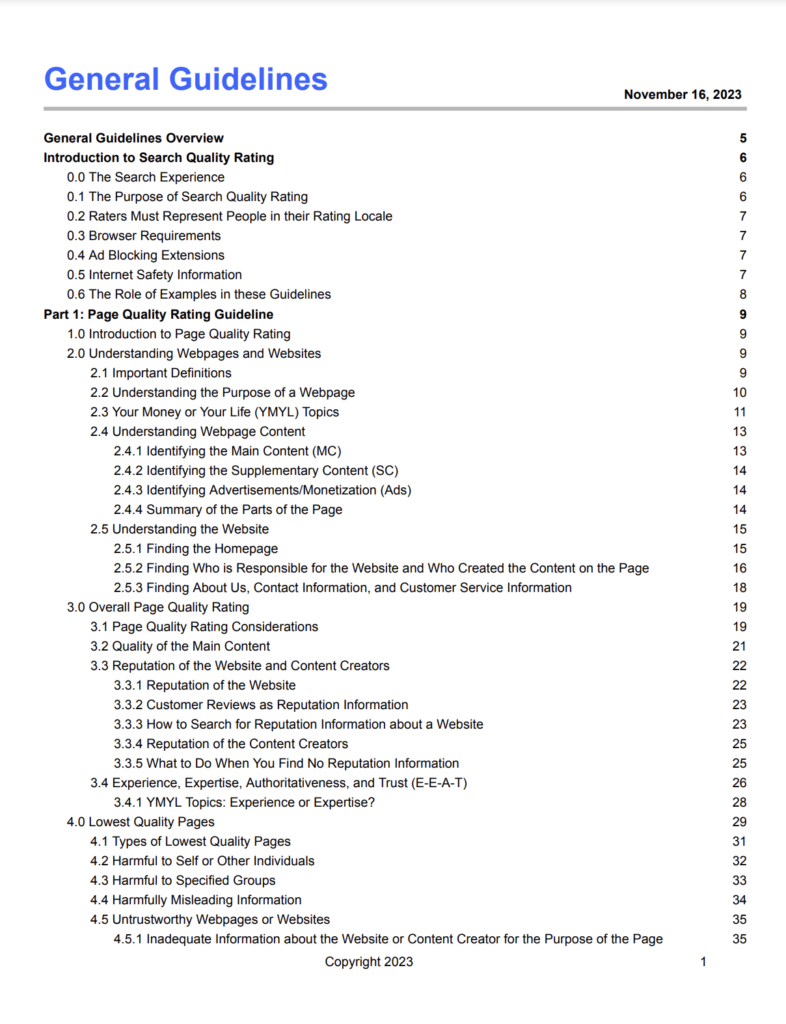
Here are the main things you need to know about what the Quality Rater Guidelines are and why you need to pay so much attention to this document:
- The main objective of the guidelines is to ensure that the raters consistently and accurately assess the quality of search results. This feedback helps Google refine its algorithms to improve the search engine’s performance.
- One of the core concepts in the guidelines is E-E-A-T, and it was in this document that this was first introduced. Raters are instructed to evaluate webpages based on the experience, expertise, authoritativeness and trustworthiness of the website’s content, content creators and overall brand.
- The guidelines provide detailed criteria for assessing the overall quality of a page. This includes considering the purpose of the page, content quality and amount, information about the website and content creator, and the reputation of the website and content creator.
- Raters use the “Needs Met” scale to evaluate how well a result meets the user’s search intent. This involves considering factors like the relevance, usefulness, and usability of the search result.
- The guidelines categorise search queries into different types, such as informational, transactional, or navigational, and provide instructions on evaluating results based on the searcher’s intent.
- There is a special focus on “Your Money or Your Life” (YMYL) content, which includes topics like health and finance. These pages are held to higher E-E-A-T standards due to their potential impact on users’ financial and personal well-being.
- The guidelines instruct raters to identify low-quality content, including misleading information, outright falsehoods, and content that could be harmful or offensive.
The Google Quality Rater Guidelines are essential for understanding how Google assesses the quality of search results and strives to provide the most relevant and reliable information to its users.
As an SEO, this is one of the most important documents we have access to from Google.
The Four Levels of E-E-A-T in the QRGs
In the Google’s Quality Rater Guidelines (QRGs), the concept of E-E-A-T — Experience, Expertise, Authoritativeness, and Trustworthiness — stands as one of the key factors of page qulity.
So let’s dive into the four different layers of E-E-A-T defined in the guidelines, unraveling its four distinct levels we see examples of.
Each level offers requirements through which the quality of content is assessed, reflecting the evolving standards of what constitutes valuable and helpful content.
Understanding these levels, and the examples provided, are key.
Lowest E-E-A-T
Sites (businesses) and pages that demonstrate the lowest E-E-A-T are ones that cannot be trusted because of reasons including:
- An extremely negative reputation
- Evidence of fraudulent behaviour
- Evidence of criminal behaviour
Here’s what Google’s quality rater guidelines tell us about the lowest E-E-A-T rating.
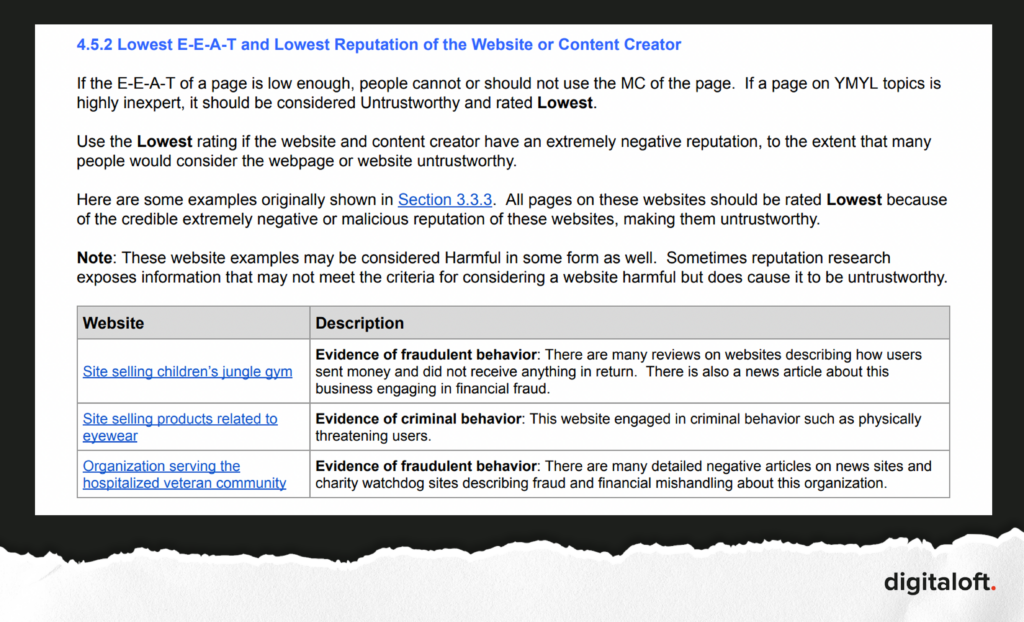
If we look at these examples, we see:
A site selling children’s jungle gym.

A site selling products related to eyewear.

An organization serving the hospitalized veteran community.

Whilst I think we can all agree that these webpages don’t look like the most modern or trustworthy of sites, they don’t necessarily scream out as ones that would receive the lowest rating.
And that’s kinda the whole point.
These examples showcase the importance of Quality Raters going beyond what they see on a page and conducting detailed reputation research. And if Google is instructing Quality Raters to do this, this should be good enough evidence for us that Google’s algorithms are able to connect the dots between content that reveals a site or brand’s negative reputation or evidence of fraudulent or criminal behaviour and a site’s trustworthiness.
Always remember that E-E-A-T is a mix of both on-page and off-page signals, and that signals that suggest trustworthiness off-page hold an awful lot of weight.
Lacking E-E-A-T
Sites or webpages that lack E-E-A-T aren’t necessarily untrustworthy in the sense that the business has engaged in fraudulent or criminal activity, and they’re not necessarily harmful in the way that those with the lowest E-E-A-T are, but typically they lack things that users expect from high quality, helpful content.
This means pages that lack E-E-A-T could:
- Be written by an author who doesn’t have first-hand experience to write about a topic that requires it (e.g. a review when they’ve never been to a place or used a product)
- Be written by an author who doesn’t have the expertise needed to write about a topic that requires it (e.g. an article about how to skydive written by someone with no experience in this; i.e. isn’t a skydiving instructor or a skydiver with years of experience doing it)
- Be written by an author, or published on a site, that isn’t an authoritative or trustworthy source for a topic that requires it (e.g. tax advice being given on a cooking site)
- Be untrustworthy because they lack sufficient information a user would expect (e.g. an eCommerce store that lacks customer service, returns or delivery information)
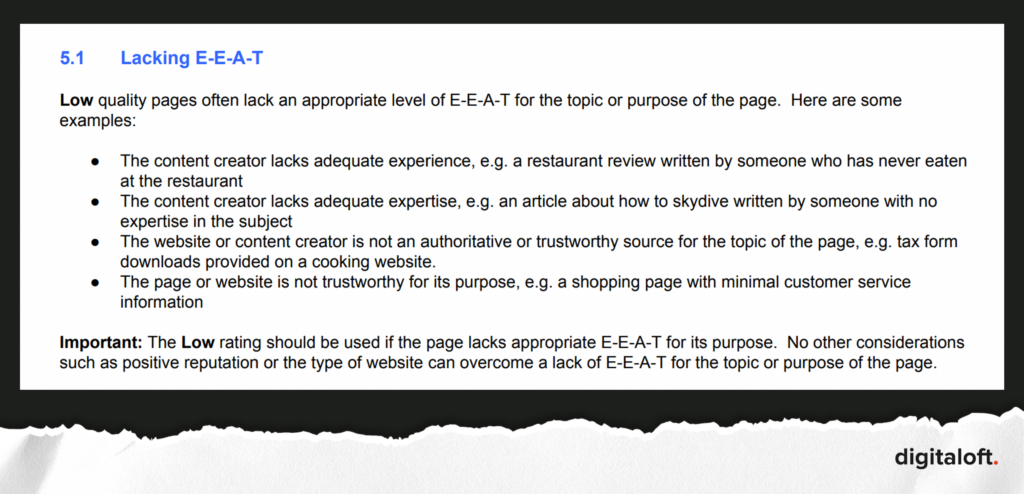
If we look at some of the examples that Google gives in the QRGs of pages that lack E-E-A-T, we see:
An informational Page: 40th birthday party food ideas.
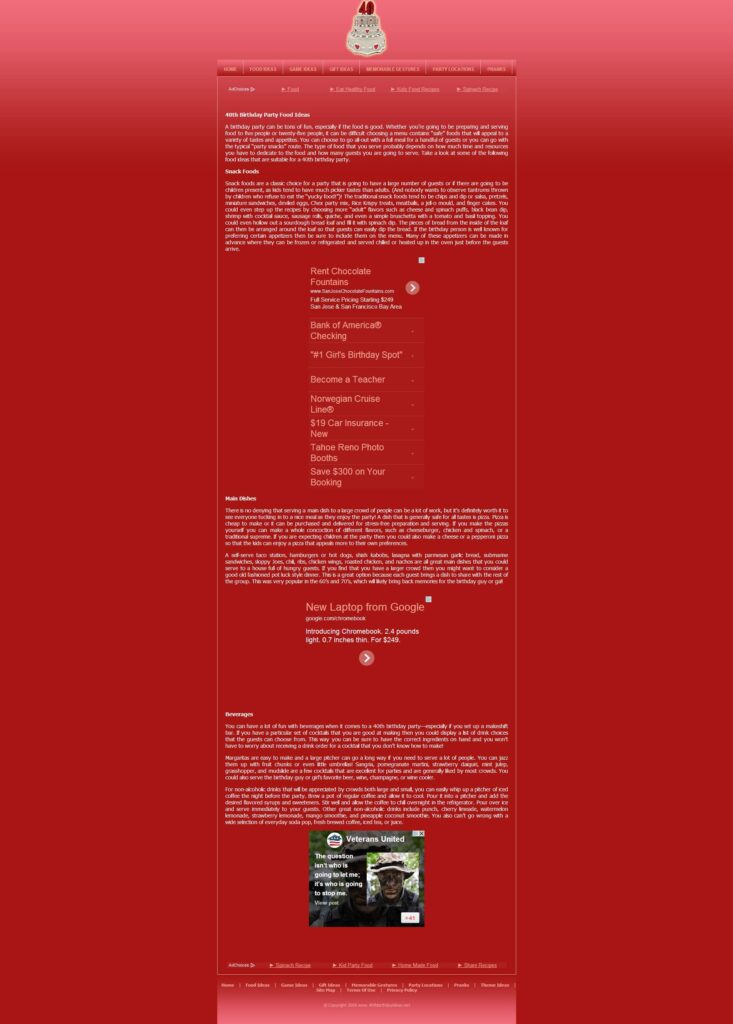
An article giving tips for dressing for the office.
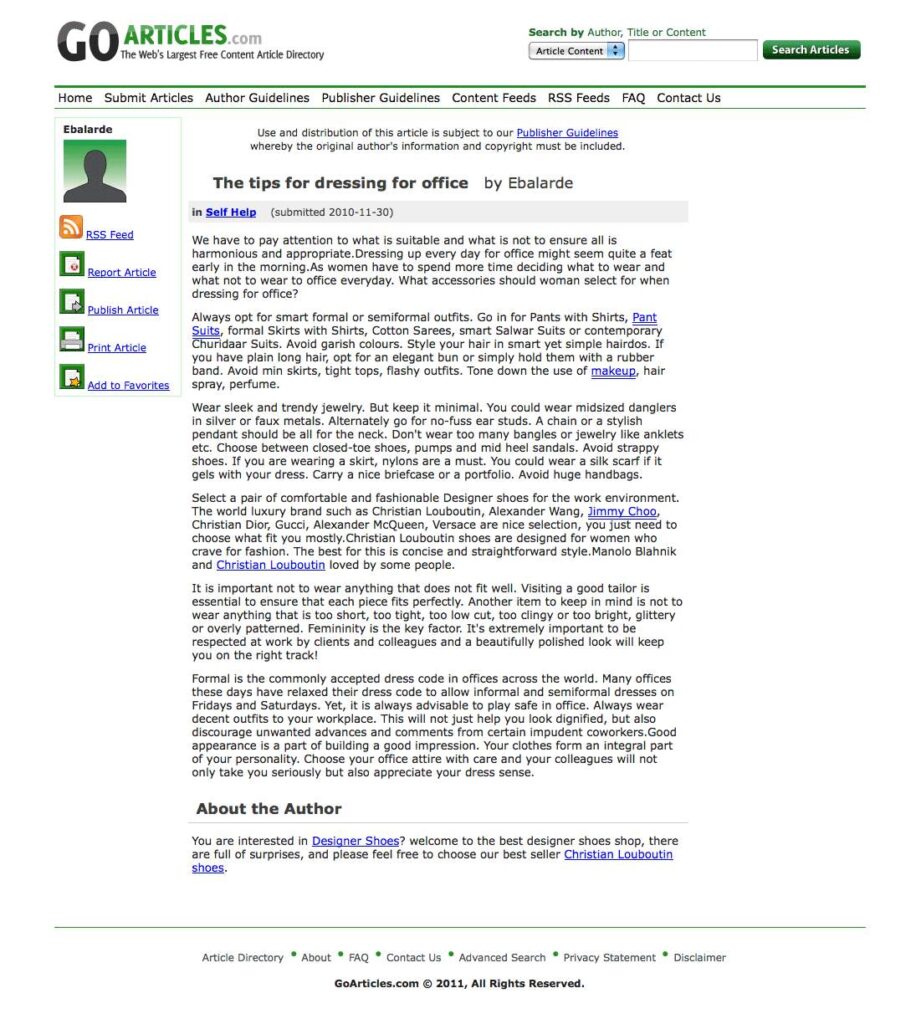
An article about using ginger for your health.

A page giving advice on picking a quality stock for investment.

A page giving information about how long the flu lasts.
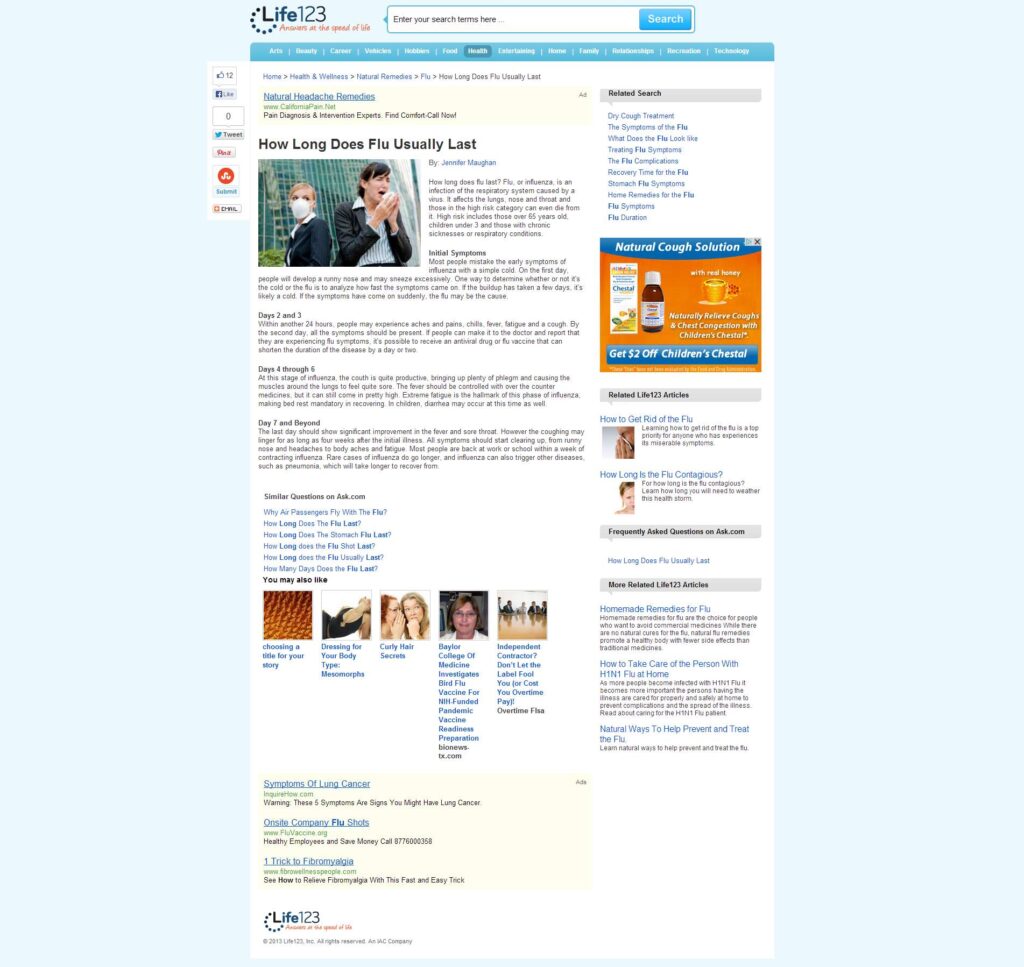
We can see lots of trends in these examples, and can hopefully agree that these are the type of page we’d think of when picturing a low-quality page that lacks E-E-A-T.
Generally, there’s little evidence of the author’s experience, expertise or authority in a topic, and the content has been published on general sites that aren’t deemed to be authorities in their space.
From a lack of author information to content that doesn’t add anything in terms of value (but is based on commonly known information), these clearly haven’t been written by someone who you’d consider trustworthy or experienced in the topic.
High Level of E-E-A-T
One of the key things for us to consider about a high level of E-E-A-T is that this is relative to the purpose of the page, topic and type of website.
And this is where we need to start carefully thinking about what users expect from a site or page.
Google clearly breaks down in the QRGs how the four E-E-A-T factors play a role in a page that displays a high level of E-E-A-T.
- Experience is important for pretty much any topic, and first-hand experience usually adds a lot of value.
- Expertise is a requirement in a lot of topics, not just those that are YMYL. This isn’t just formal expertise (education, for example) but can be informal expertise, too.
- Authoritative pages exist on all topics and for all types of site, and it’s important to become a go-to source where possible.
- Trust is key to having a high-quality page, especially when a site processes payments or is in a YMYL niche. Not all pages require a high level of trust, but when you’re able to demonstrate this, it’s not a bad thing.
Remember that the types of E-E-A-T signals a page needs to be considered to have a high level of E-E-A-T are relative to the topic. Medical and financial sites, for example, require a greater depth of E-E-A-T than a lifestyle and fashion blog.

If we look at some of the examples that Google gives in the QRGs of pages with a high level of E-E-A-T, we see:
A local fish & chips restaurant
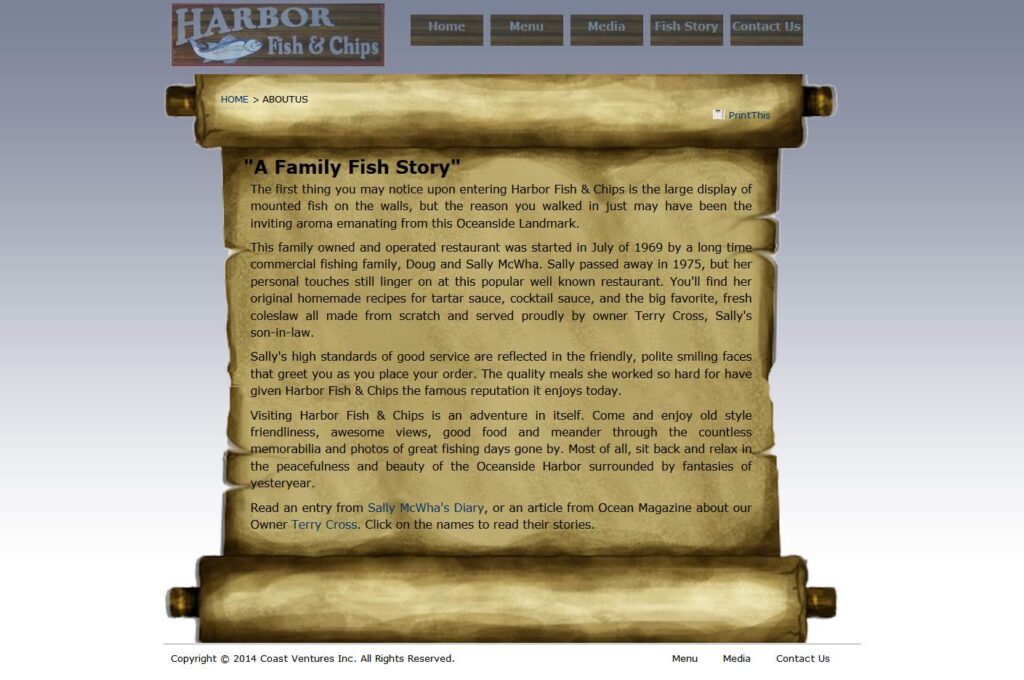
A local preservation center

A parenting article about strollers

A bathroom décor page on a store website

When we look at the examples of pages that demonstrate a high level of E-E-A-T shared in the QRGs, we see a few key takeaways:
- A brand’s website is the go-to source for information about itself and should be considered in such a way.
- The author of the parenting blog post has become known as an expert on parenting issues (Expertise) and is a regular contributor to this and other media websites (positive content creator reputation).
- With the bathroom decor retailer, we see Google commenting that this company sells its own line of high end, fashionable baby and children’s furniture and accessories. It has a positive reputation and expertise in these specific types of goods. Many products sold on the site are unique to this company.
Very High Level of E-E-A-T
Achieving a very high level of E-E-A-T, based on the examples given in Google’s Quality Rater Guidelines, signifies an exceptional standard in content quality and is reserved for only the highest quality pages.
A very high level of E-E-A-T is all about demonstrating the highest level of signals relevant to the website or content in question:
- An authoritative go-to source for a topic (an individual content creator or a website) is considered to demonstrate a very high level of E-E-A-T.
- A content creator with years’ of first-hand experience in a topic where this is more important than formal expertise demonstrates a very high level of E-E-A-T.
- A content creator or website with a very high level of expertise (for example, a doctor in a specialist field would be seen to demonstrate this) demonstrates a very high level of E-E-A-T.
Essentially, these are the most trusted sources online for a given topic.
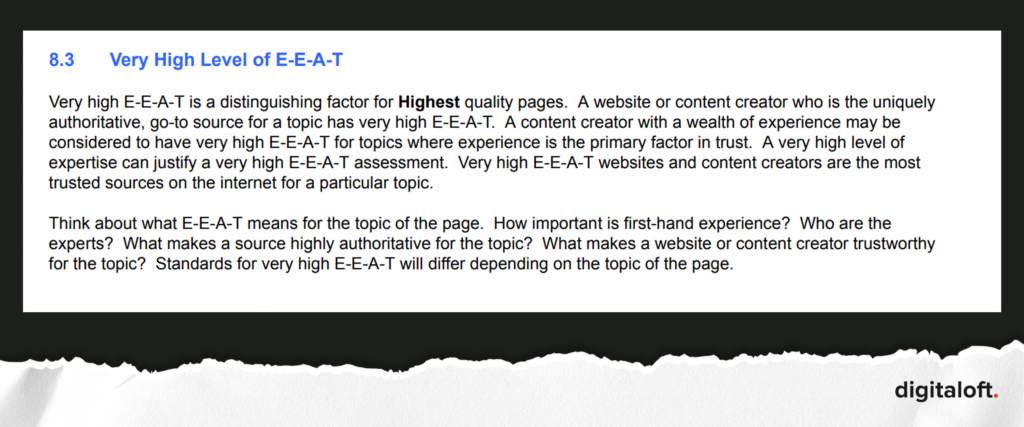
If we look at some of the examples that the QRGs give of pages with a very high level of E-E-A-T, we see:
An article on a newspaper website

Fact-checking page on an Internet rumour debunking website

A web page with Yosemite National Park information
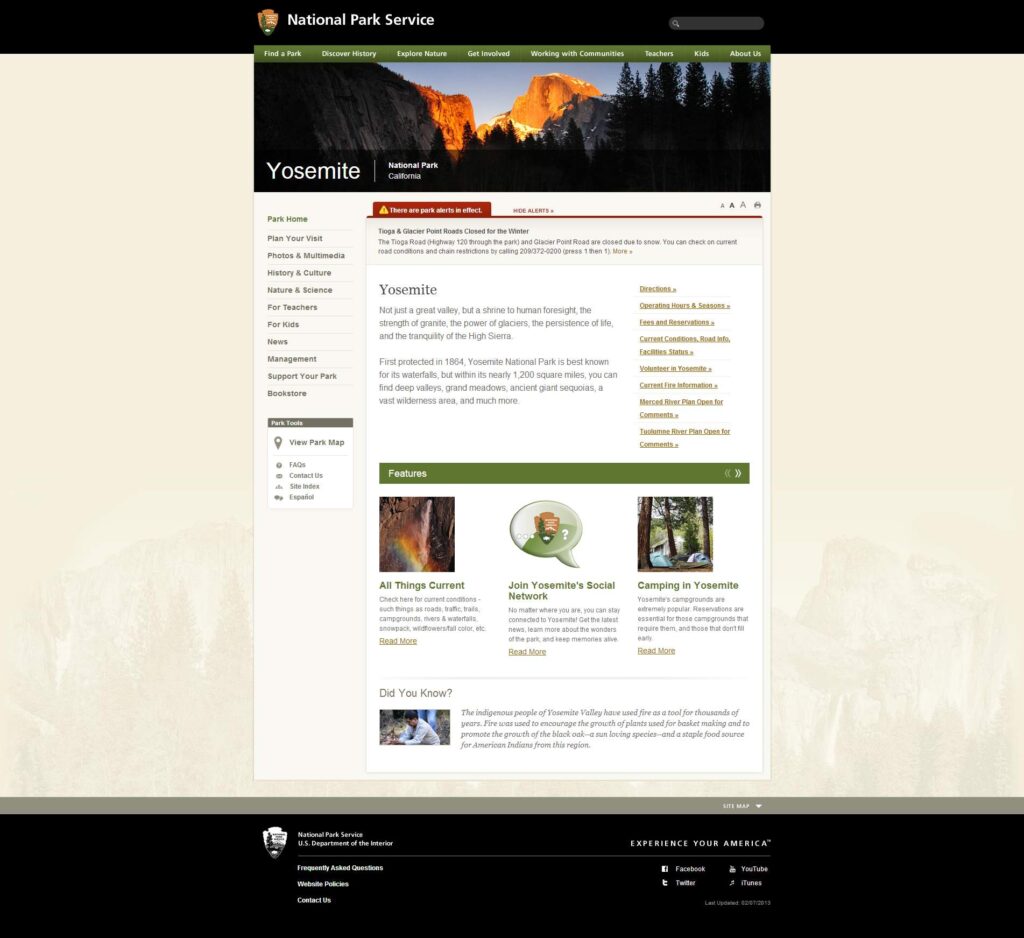
A web page offering software tips
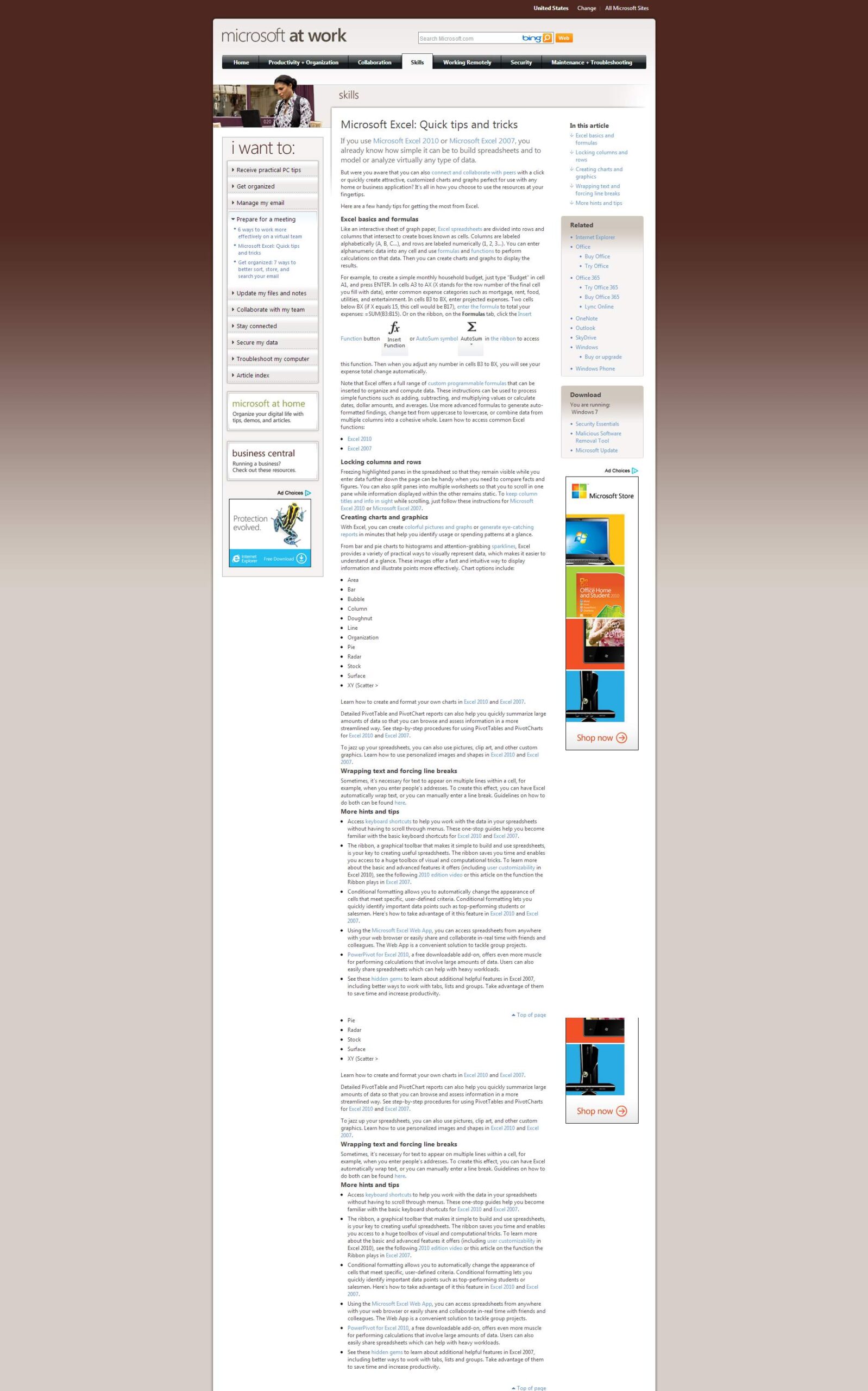
Tax forms page:

A page about meningitis

A backpack shopping page

Chocolate chip cookie recipe on a recipe blog

When we look at the examples of pages that demonstrate a very high level of E-E-A-T shared in the QRGs, we see a few key takeaways:
- Article examples demonstrate content created by authors with extensive knowledge and experience in investigative journalism (Expertise).
- In the example of a page debunking internet rumours, users can trust the information on this page due to the website’s positive reputation and high level of expertise in debunking stories of this type.
- In the Yosemite example, since the page is on the official national park website, it is uniquely authoritative (highest E-E-A-T).
- In the example of the software tips web page, because the page is on the official website of the company that produces the software, it is highly authoritative (highest E-E-A-T).
- In the example of the meningitis page, this website has a reputation of being one of the best web resources for medical information.
- For the backpack shopping page, since the store produces this backpack (unique product), they are experts on the product, making the page on their own website authoritative (highest E-E-A-T). In addition, this store has a reputation for producing one of the highest quality and most popular school backpacks on the market.
- For the receipt site, the author of this blog has documented her extensive experimentation with a chocolate chip cookie recipe (Experience), and her expertise and skill is demonstrated in the large quantity of unique, original, and very satisfying MC.
Why E-E-A-T Matters
E-E-A-T matters in a big way both to Google and SEOs. And if you want to earn sustainable rankings, it’s something you need to pay attention to.
We should think about E-E-A-T as Google’s way of ensuring that the content that ranks on the SERPs is high quality and can be trusted by searchers.
As SEOs, we should consider it as demonstrating the right to rank.
But why has E-E-A-T become even more important in the last year, especially as part of the Helpful Content System?
AI.
It’s easier than ever to create content at scale using AI tools like ChatGPT, Koala or others. But just because you can doesn’t mean you should.
And over the last year, we’ve seen a rapid increase in the amount of content being published that’s not been written or reviewed by an expert, adds no value beyond what currently ranks and, quite honestly, shouldn’t be trusted. In many cases, this content is being churned out by people who know very little at all about a topic.
And that’s exactly what Google’s been working, for many years, to prevent.
E-E-A-T, alongside related algorithm updates, is Google’s answer to ensuring that the content that ranks on the SERPs can be trusted.
But beyond the rise in AI content, E-E-A-T matters because it’s something users genuinely care about. Whether consuming content or spending money, people need to be reassured that the site they’re on can be trusted.
E-E-A-T: Signals Not Ranking Factors
One thing that you need to be aware of is that E-E-A-T is NOT a ranking factor.
At least, they’re not ranking factors in the same way as most of the SEO tactics we’re used to using are.
Instead, these are signals that align with things the algorithm looks for.
And we can learn a little more about these by analysing documents, including How Google Fights Disinformation. Within here, we can see two key comments on how E-E-A-T is about signals with how users value these things:
The systems focus on measurable signals that correlate with how users and other websites value the expertise, trustworthiness, or authoritativeness of a webpage on the topics it covers.
How Google Fights Disinformation
Our ranking system is specifically designed to identify sites with high indicia of expertise, authority, and trustworthiness.
How Google Fights Disinformation
This means that E-E-A-T in itself, at least in the context of Search Quality Raters and the way they use this, aren’t a ranking factor.
Google does not take these ratings and use them to influence rankings directly.
But Google’s algorithm does reward sites that demonstrate these signals.
E-E-A-T’s Involvement in Algorithm Updates
And one of the key things we must consider is that it is likely that E-E-A-T has a strong involvement in algorithm updates.
And in Google’s recent antitrust trial, in particular Pandu Nayak’s testimony, we see more evidence of this.
Nayak commented:
The IS Score is Google’s primary top-level metric of Search quality. That score is computed from search quality rater rankings. It is “an approximation of user utility.”
IS is always a human metric. The score comes from 16,000 human testers around the world.
Sometimes, IS-scored documents are used to train the different models in the Google search stack. As noted in the Ranking section, IS rater data helps train multiple deep learning systems Google uses.
Here we have it. Evidence that IS (Information Satisfaction), a score computed from Search Quality Rater rankings, is used to train multiple systems that Google uses.
I’ve said for a while now that it’s likely that Google’s Helpful Content System has been trained on pages that display a high or very high level of E-E-A-T.
And whilst it may not be a direct ranking factor, it’s absolutely something that can influence these in many different ways and that, therefore, SEOs should be paying close attention to.
E-E-A-T for YMYL Sites
YMYL, an acronym for “Your Money or Your Life” found in Google’s Quality Rater Guidelines, refers to websites and content that can significantly impact a person’s health, financial stability, safety, or well-being.
In the context of E-E-A-T, these sites are held to the highest level of scrutiny.
This includes ensuring that information is not only accurate and trustworthy but also provided by experts with recognised qualifications or extensive experience, depending on what the specific topic requires. The importance of E-E-A-T in YMYL niches is critical, as the information provided can directly influence key life decisions and impact health or wealth, amongst other things.
In Google’s words:
YMYL topics may significantly impact or harm one or more of the following:
- the person who is directly viewing or using the content
- other people who are affected by the person who viewed the content
- groups of people or society affected by the actions of people who viewed the content
In many cases, this is because the content (or the people behind it) itself isn’t accurate and trustworthy.
The QRGs further define this as:
Many or most topics are not YMYL and do not require a high level of accuracy or trust to prevent harm . Because YMYL assessment is a spectrum, it may be helpful to think of topics as clear YMYL , definitely not YMYL or something in between. Pages on clear YMYL topics require the most scrutiny for Page Quality rating.
Google Search Quality Rater Guidelines
Here’s a great comparison from Google on deciding whether or not a topic is YMYL.
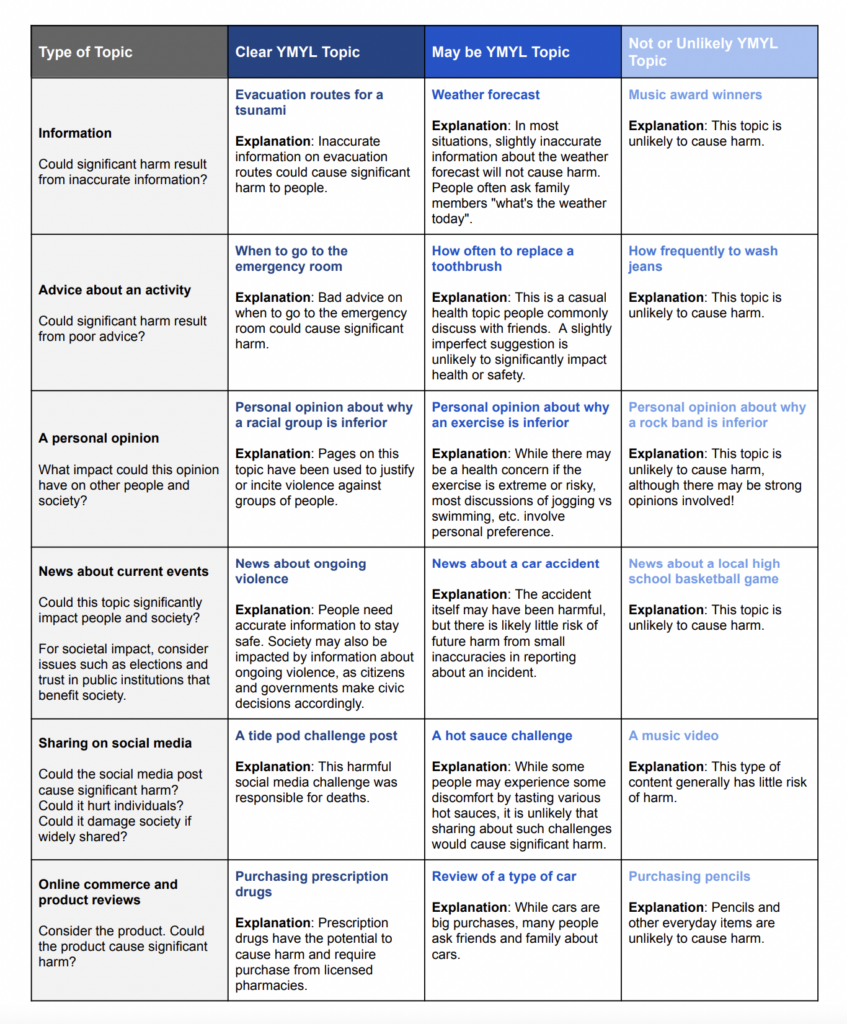
You Can’t Fake E-E-A-T
E-E-A-T isn’t something you can fake.
But despite this, many have tried and will continue to try.
You see, demonstrating E-E-A-T isn’t about ticking a few boxes, adding an author’s name to posts or creating a bio page.
It’s about the bigger picture. About these things being a representation of experts and their experience, not just doing them.
E-E-A-T isn’t a checklist that Google uses, rather the algorithm looks at signals that align with these things, making it near-on impossible to fake.
Similar to what I said before. We don't read a page, go name, check! Photo, check! Phone number, check! And somehow add these into a E-E-A-T ranking factor because we don't have a factor like that. *We look at a variety of things that align with those qualities.*…
— Google SearchLiaison (@searchliaison) October 24, 2023
Practical Tips to Demonstrate E-E-A-T
When it comes to demonstrating E-E-A-T, there’s no single set of things you need to do. But there are things you should be doing at a base level.
Here are nine practical ways you can demonstrate E-E-A-T. This is by no means a comprehensive list of ways to do this, but think of it as actionable things you can go away and roll out.
Make it clear who is behind the content on your site.
Is it easy to find out who wrote the content on your site?
Make sure you’re clearly displaying who wrote the content (primarily, I’m talking about informational content, not service or eCommerce pages), and that the author’s name is clearly linked to an author’s profile page on the site.
Assign content to real people, and that these people are subject matter experts.
Content must be authored by a real person who is a subject matter expert.
Avoid publishing under the author name of ‘admin,’ your business name or your marketing person (if at all possible).
You should be using subject matter experts whose expertise can be verified (more on this soon).
Here’s an example of this done brilliantly on this page:

Making sure your content is being published by subject matter experts is so important.
Create standalone author/bio pages for your authors.
You need to make sure that you’re creating standalone author bio pages for each of your authors.
Here’s one of my favourite examples of a great author page:
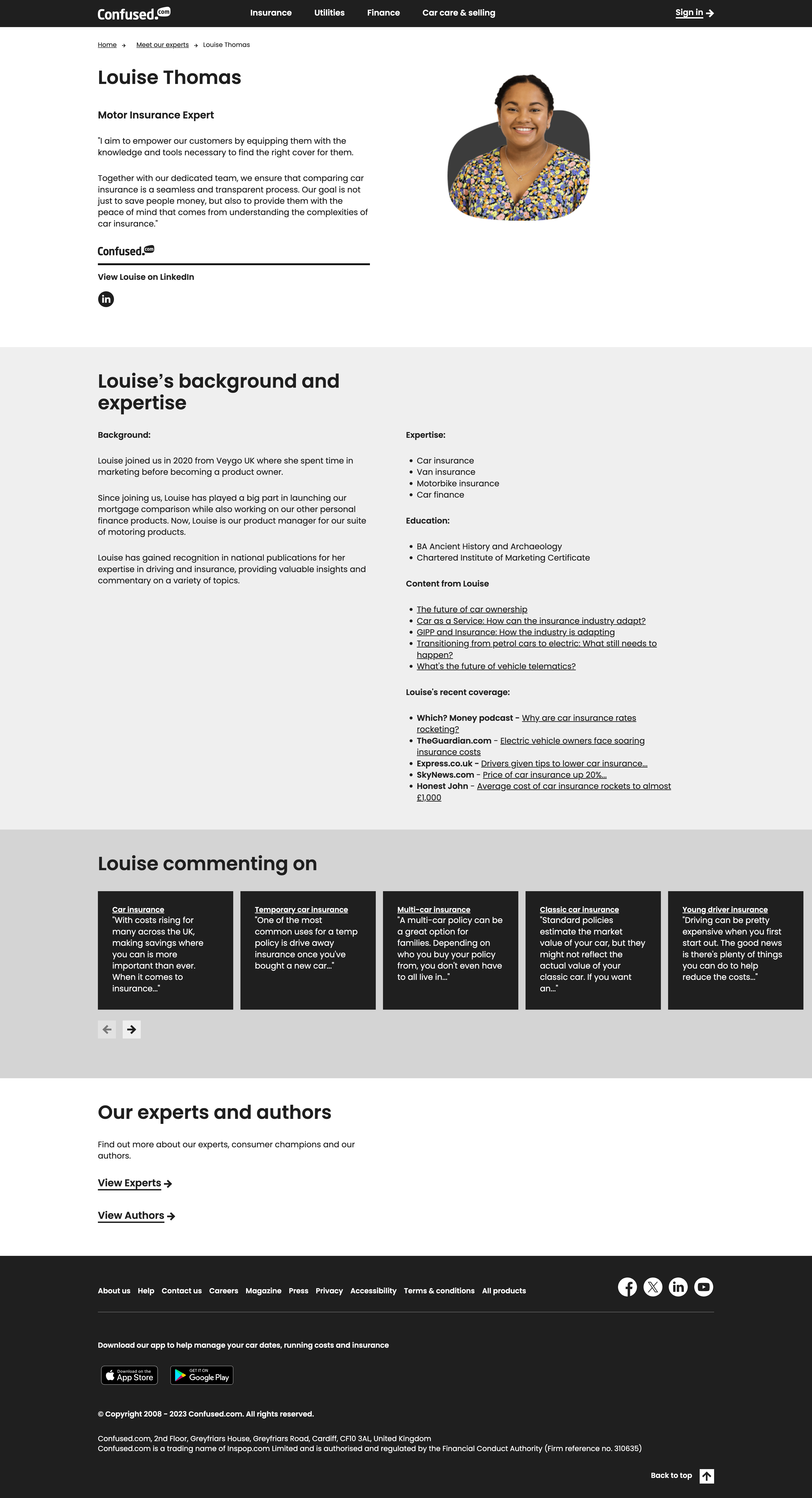
Make sure your author pages include:
- The author’s name clearly displayed and used as the URL slug.
- The author’s job title.
- The author’s profile picture.
- The author’s bio/description.
- The author’s background & expertise.
- The author’s educational background.
- Links to the author’s published content on the site.
- Links to the author’s comments/quotes featured in the press or third party writing.
If you need inspiration for yours, check out our guide to author page examples that brilliantly demonstrate E-E-A-T.
Include a short author bio on posts and link through to the main author page.
Whilst standalone author pages are a must-have, so are short author bios on posts themselves.
Be sure to give a short intro to who your authors are in a bio and link through to their main author page.
Again, NerdWallet does this very well:
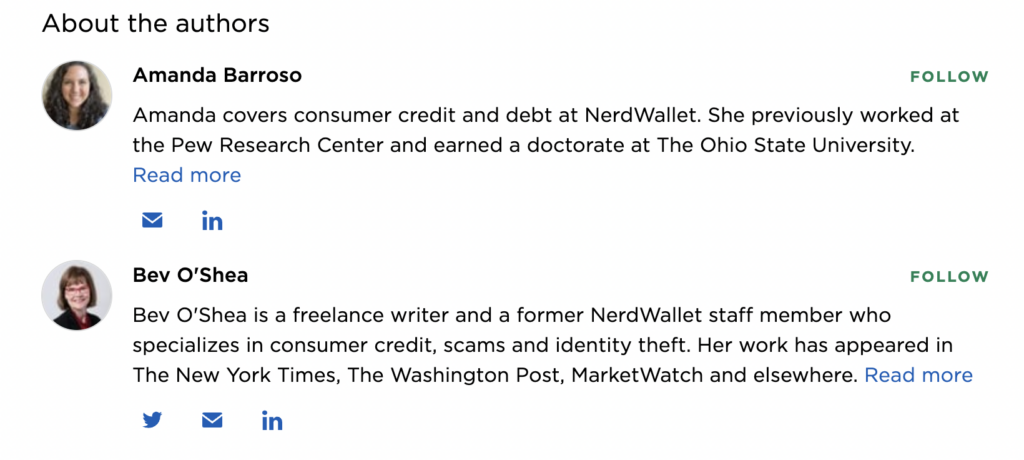
Use the insights of your experts throughout your site’s content.
Your content must add value beyond what already ranks on the SERPs, but value must still mean verifiable and backed-up statements.
Add quotes & comments from your subject matter experts within your content, using these to add value.
Here’s a great example of NerdWallet doing this in their guide to how to improve your credit score fast.
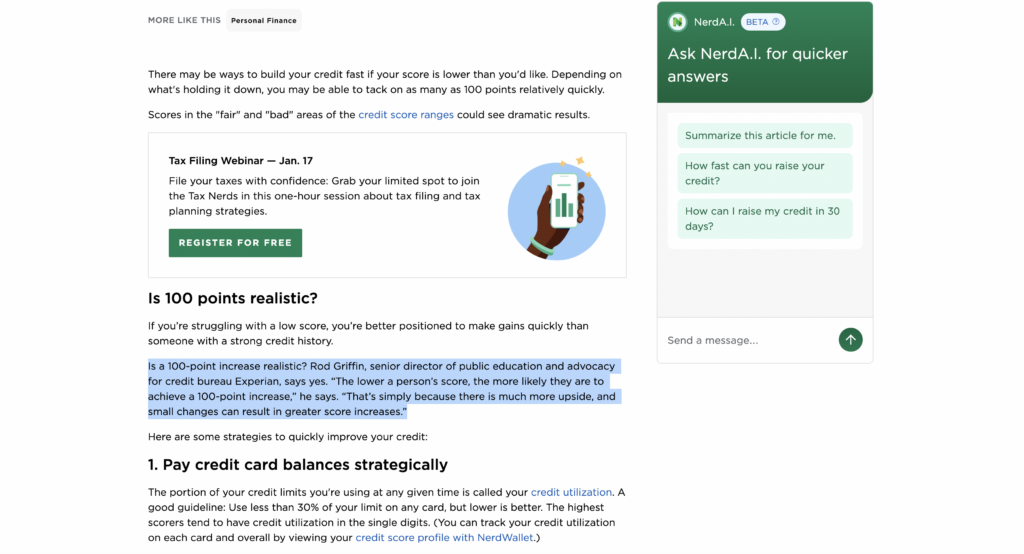
Use your own images, video or even screenshots to demonstrate first-hand experience.
Stock images and footage don’t portray first-hand experience.
In fact, widespread use of stock images, and none that demonstrate experience, is considered one of the things that caused some sites to get hit by the recent Helpful Content Update.
Users want to consume content that’s been produced by people with expertise or who have experienced something first-hand.
It takes effort to create or source unique images, but it sets you apart.
But this doesn’t just mean photos. Screenshots and video footage can also show first-hand experience.
Get your experts cited in the press, sharing their insights on their key areas of expertise.
You want your people cited as experts within relevant articles in the press. And digital PR is the perfect way to do this, earning both links and mentions.
Associating experts with top-tier publications builds trust and authority and acts as third-party validation.
Just be sure your experts cited in the press are the same as authors on the site, put in the effort to connect the dots.
Check out our guide to the role of digital PR in demonstrating E-E-A-T to learn more about why this tactic is so important, or our guide from Digitaloft’s Associate Digital PR Director, Amy Irvine, on what digital PR is for more of an introduction.
Improve your About Us page.
Most ‘About Us’ pages are an afterthought; nothing more than a quick summary of the brand.
Be the brand to stand out and put in the effort to create an engaging page that tells your story on a single page & helps to demonstrate who you are and what you do.
It’s your space to tell your audience what they need to know in order to trust the brand.
Benchmark your own page against competitors & figure out what you can do better, and check out our guide to About Us page examples that brilliantly demonstrate E-E-A-T for inspiration.
The 3 Cornerstones of E-E-A-T
In the aftermath of September’s Helpful Content Update, one thing that’s become really clear to me is the need to start thinking about E-E-A-T not just as an overall signal or set of signals but at there’s distinct levels:
- (Main) content level
- Author (creator) level
- Brand (website) level
When looking at many sites that were negatively impacted by the HCU, it’s evident that they lacked E-E-A-T on at least one of these levels.
E-E-A-T isn’t a single set of signals; it’s a series of both on-page and off-page signals at the content, author and brand levels.
This is something we can infer straight from page 27 of Google’s Quality Rater Guidelines.

And once you get into the mindset that E-E-A-T must be demonstrated in every piece of content you publish, for every author who writes for your site and for your brand as a whole, you’ll think about what it takes to do this in a very different way.
You can check out my guide to Breaking Down E-E-A-T to the Content, Author & Brand Levels to learn more.
E-E-A-T; Demonstrating Your Site’s Right to Rank
E-E-A-T is something you can’t ignore if you want your site to survive and thrive in future algorithm updates.
And whilst it’s not a ranking factor in itself, there’s plenty of evidence that it closely aligns with things that the algorithms do reward.
In many ways, E-E-A-T is all about demonstrating your site’s right to rank. That your content has been created by someone with the necessary experience or expertise for the topic and that it’s published by an authoritative and trusted brand or publication…









